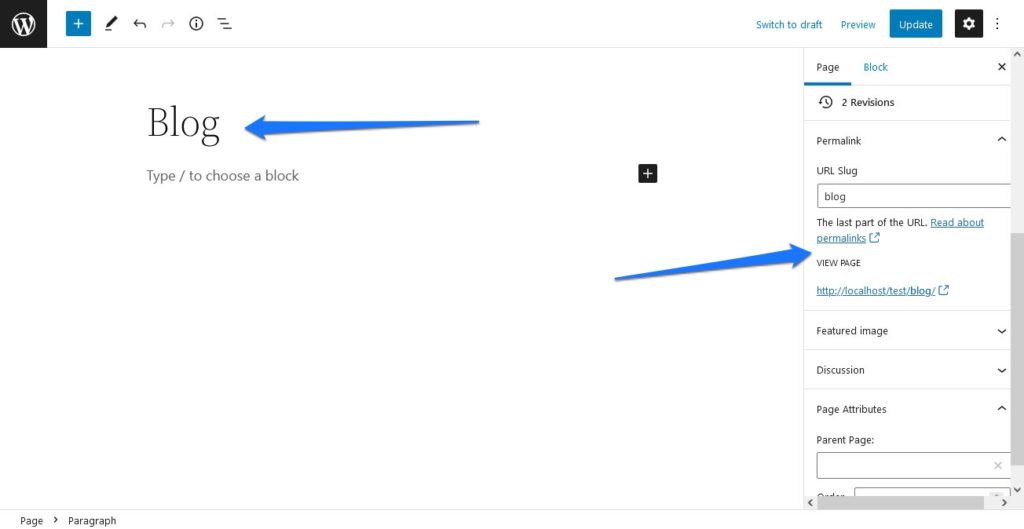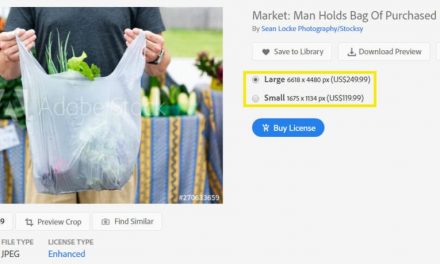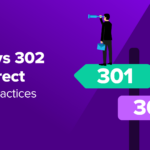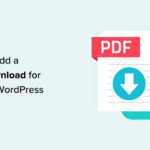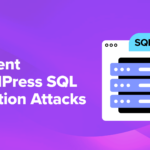If you’re planning to start blogging for business, it’s imperative you ensure you’re taking the right approach, even from the very beginning. After all, a blog can serve as the touchstone for people to get to know your business. They can learn about your offerings and get a handle on your unique perspective.
A blog is also a staple component in content marketing. It can act as a convenient way to produce search engine optimized content that gains traction with Google and delivers fresh eyes to your website.
But you probably know why business blogs are so vital already. With this mind, we’ll be discussing everything you need to know to start a new blog for your company from securing a domain to monetization. Let’s get started.
How to Start Blogging for Business – First Steps
The first step is to have a blog (duh!). Since your goal is to start blogging for your business, I will assume that you already have a website. If it’s built with WordPress, creating a blog is really easy.
Set Up the Blog Page
First, you need to create a new page that will function as your blog page. You can do that in the WordPress back end via Pages > Add New. Give it a name (“Blog” is an all-time favorite) and make sure that the permalink address is where you want the blog to appear.

When all of that is taken care of, save and publish the page. Don’t worry that it’s empty, it will simply function as a placeholder and doesn’t need any content.
Close the editor and go to Settings > Reading. Here, you find an option that says Your homepage displays at the top.
If you are running a business website, it is most likely already set to A static page with your desired front page selected under Homepage. To add a blog, you now need to pick your newly created page from the drop-down menu under Posts page.
While here, you might as well use the opportunity to determine how many blog posts you want to display on the blog and whether to show your post’s full content or excerpt. In the first case, you need to manually include a read-more block where you want the post preview to end. In the latter, it will display a preset post length.
Save your changes at the bottom.
Add the Page to Your Menu
The last thing that is left is add the blog page to your site’s menu. You can do this under Appearance > Menus. Use the options on the left side to add the new page to the menu.

If you are using a block theme, you have to do this inside the Full-Site Editing menu. Once saved, you will then see the new blog page as a clickable option on your site.

However, as you can see, it is currently empty. Time to change that.
Do Research and Create a Style Guide
Before you start writing, you need to research your target audience and what topics they want to read about. Once good place to do that is on social media. Search for key terms related to your industry to see what people are talking about. What questions are they asking? What piques their interest? Build a healthy list of potential topics to write about with the intention of fulfilling a need for your target audience (and potential customers).

Next, consider the format that would work best for the message you want to convey. It can be helpful to look at competitors’ content at this point. Ask yourself a few questions about what you see:
- What are people in your niche sharing the most?
- What formatting do they use?
- Is it long-form or short?
- What’s the overall tone of the writing?
- What type of blog posts are being shared the most? Listicles? How-to guides? Roundups?
- What’s the balance between cornerstone content and evergreen content?
With these answers in mind, you can make informed choices about your content strategy. It also helps to formalize what you have learned in a blog style guide that details what content on your blog should look like.

Set Up a Posting Schedule
Your next task is to figure out how frequently you’d like to publish content to your blog. Paying mind to what your competitors are doing can be helpful here as well. If the industry standard is one post per week, that is likely what has been tested and proven to work well.
However, there is always wiggle room here, especially if you want to stand out from the crowd. But more posts doesn’t always equal better engagement. Committing to one, high-quality post per week to start is a good (and manageable) idea. Also, select a time for your posts to go live and stick to that. Consistency boosts engagement.
WordPress has a built-in feature for scheduling posts in advance. That way, you don’t have to be physically at your computer for the post to hit the blog.
You can also use a plugin to add a publication calendar to your dashboard. This is especially helpful if more than one person will be managing content on your website. A couple of plugins to consider include CoSchedule and SchedulePress.

Keyword Research and SEO Optimization
When first starting out with blogging for business, it’s a good idea to figure out how you’ll optimize your content – and website as a whole. Though you can certainly do it after the fact, it’s a better idea to implement SEO measures straight out of the gate. Yes, that means adding another task to your to-do list but it’ll be worth it in how many more eyeballs land on your content.
Optimization begins with keyword selection. Choosing the right keywords for your industry, niche, and specific blog post matters a great deal as does understanding search intent. Learning about both of these will greatly help you make your content more useful for your readers.

You can use a tool like Ahrefs to zero in on keywords your competitors are ranking for. With that info in hand, visualize how to optimize your content to outrank your competitors using tools like Clearscope and Frase.
In addition, there are plugins to optimize your posts directly within WordPress. Yoast is a popular choice, as it showcases exactly what you need to do to focus a post for a specific keyword as you’re writing it. Rank Math is another top choice for this feature set.
More broadly, you want your content to directly speak to your audience and provide something of value. If your content doesn’t provide the information people are looking for they’ll click away fast – no matter how well you optimize.
Quality content is what matters most. So, fulfill the needs of your target audience (what they’ve been searching for online) and they’ll be more likely to stay on-page (and more likely to complete your offers, CTAs, and to make purchases).
Start a Newsletter

Once your blog is set up and you’ve populated it with some content, you need to think about how to drive visitors back to your site over and over again. Creating a newsletter is a great way to do that. You can add a call-to-action to your blog that prompts visitors to input their email address and receive occasional emails from you about your latest blog posts and offers.
Many services streamline this process and integrate with WordPress well including AWeber, MailChimp, and Constant Contact. That way, you don’t have to build forms from scratch. Plus, they typically work in most widgetized areas of your blog.
Enable Web Analytics
No matter what type of website you have, it’s vital to make use of web analytics. Analytics can tell you a great deal about the type of people that visit your site, which pages they land on, and which pieces of content they like. They can also tell you which keywords were used to connect the visitor with your content.

Google Analytics is the most popular choice for this, primarily because it’s free, powerful, and most people already have a Google account. Plus, there are many plugins available that make adding Google Analytics to your WordPress site straightforward and simple like GA Google Analytics. However, there are also alternative web analytics.
Over time, you can use the collected data to make informed decisions about the type of content you make.
Promoting Your Blog
Next on your business blogging to-do list is to get a handle on how you will promote your blog posts. This can be as simple as sharing your latest posts on your social media accounts. Or, it can be a bit more complex. A social sharing plugin can make it easier for your visitors to spread your posts to their followers, such as Better Click to Tweet. It allows visitors to share quoted text that resonates best with their audience.
Your promotional work can happen directly in response to people’s posts about your content as well. Reply to comments, tweets, and other social posts when able. It will help you develop a reputation as being responsive, helpful, and courteous.
Beyond the sharing aspect, you can also coordinate guest posts with other blogs. This means you write a post for another website that includes a link back to your content. Or, you might wish to collaborate on a larger project with several bloggers in your niche where each of you posts a segment on your own website. There are many options in this space that can garner a real sense of community, build awareness for your brand, and create real relationships with fellow creators.
Still another way to promote your content is by adding your website to an advertising network. That way, ads for your site will appear on other relevant websites. It’s one of many pay-per-click advertisement approaches.
Monetization
Once you’re creating content consistently and have found effective ways to it, the next logical step is to monetize your blog. How you do that really depends on your business model.
If you are using the blog to attract more people to your existing business, the monetization part is likely already taken care of. However, you can also use blogging as its own business, which opens up additional avenues for monetization.
- Affiliate marketing — Join one or more affiliate programs and add their links on your site. When someone clicks on them and makes a purchase, you get a cut of the sale. Amazon is one of the most popular options by far, but you can sign up for many other stores and products individually as well.
- Premium member content — Another option is to put some of your content behind a paywall and charge a membership fee for access to it. Memberships can bring in a consistent flow of revenue for established blogs. You might even consider setting up your own affiliate program one day.
- Digital products — Alternatively, it’s also possible to create different types of media outside of blog posts to offer for download. Options include ebooks, slide decks, and webinars. You could even set up an online course.
The sky’s the limit here, and as you build up a healthy stable of content, you can experiment a bit to see what types of monetization efforts work the best for your industry and niche. You can find more tips here plus helpful plugins for monetization in this post.
Set Attainable Goals
As you work on building up your new blog, it’s a good idea to set some goals. But keeping them realistic is best. Failing to reach an outlandish goal can be discouraging and might make you stray from your plans. Instead, set a series of realistic and attainable goals to keep you feeling motivated and on track.
A few goals to considering setting right as you’re first starting out include:
- Publish 50 posts on schedule.
- Reach 100 email subscribers
- Get 1,000 views on a new post.
- Reach 500 followers on Twitter.
You get the idea. And once you reach these goals, that opens up the opportunity to set new ones with increased parameters.
If you fail to meet your goal within a specific time frame or slip up somewhere along the way, that’s no reason to throw up your hands and give up. Perhaps your initial goals were too ambitious? It can take time and real dedication to get a business blog operating smoothly and to get a steady stream of visitors. Be patient with yourself. Besides, making mistakes is how you learn!
Final Thoughts on Blogging for Business
Starting a business blog doesn’t have to be a giant headache. Yes, it is a lot of work, but don’t let that deter you: the rewards are well worth it. As noted here, to get started you need a solid foundation. Truly understand what your target audience wants (and what your competitors are doing), then create a schedule, stick with it, and consistently engage with your audience on your blog and via social media.
Promote your work, figure out monetization methods, and track your efforts with realistic yet motivating goals. By taking this approach, while success is not guaranteed, you are definitely putting yourself into a good position to have your business blogging efforts pay off.
Now it’s your turn. What are your tips to successfully start blogging for business? Feel free to sound off below.

